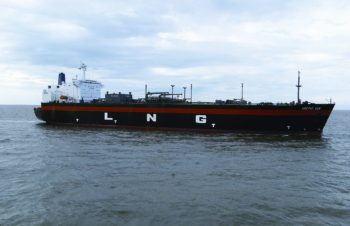
U.S. liquefied natural gas (LNG) exporters have shifted their focus to Southern Europe from Asia as cold weather and problems with Algerian gas supply have driven Europe’s gas prices higher.
Gas prices in Europe are at their highest premiums to U.S. gas prices for three years. Several cargoes have already made their way to Europe, and analysts expect more to come.
Day-ahead prices at southern France’s Trading Region South (TRS) gas hub jumped to a near five-year high last week of 45 euros per megawatt hour, or over $14 per million British thermal units (mmBtu), making TRS one of the world’s premium markets.
Next-day gas prices at the Henry Hub benchmark in Louisiana, meanwhile, traded around $3.25 per mmBtu on Tuesday.
Consumers cranked up their heaters as cold weather hit the region, pushing up demand for gas. As demand has risen, supply from Algeria has been reduced due to problems at Sonatrach’s Skikda LNG export terminal.
The ongoing shutdown of some French nuclear plants as a consequence of the discovery of forged manufacturing documents for some parts used in those plants has also fired up demand for power from the region’s gas-fired plants higher than normal.
Spain, Greece and Turkey would be other possible destinations for the LNG cargoes, said Madeline Jowdy, senior director global gas and LNG at PIRA in New York.
The flow would likely slow in March, as winter comes to an end in Europe, said Ted Michael, LNG analyst, natural gas, at energy data provider Genscape.
Over the past month, one vessel has delivered U.S. gas to Spain and one to Turkey. Two more vessels transporting U.S. gas were sailing in the Mediterranean and another was moving across the Atlantic, according to Reuters shipping data.
That is very different from December when more than half of the vessels departing Cheniere Energy Inc’s Sabine Pass terminal in Louisiana turned west toward Japan, South Korea and China. Sabine Pass is the only LNG export terminal in the lower 48 U.S. states.
In December, spot gas prices in Asia spiked to a near two-year high of $9.75 per mmBtu in early January due to cold weather and a problem at the Gorgon LNG export terminal in western Australia.
Asia gas prices have since collapsed by about 18 percent due in part to the return to service of the first liquefaction train at Gorgon.
Sabine Pass should have more gas to sell than in December since the third liquefaction train at the facility started processing gas during its commissioning phase.
Over the past two weeks, Sabine Pass has processed about 2.0 billion cubic feet per day (bcfd) versus an average of 1.4 bcfd in December, according to Thomson Reuters data.
Since the first cargo left Sabine Pass in February 2016, about 65 vessels have carried off about 210 bcf of gas from the facility, worth about $540 million based on average Henry Hub prices in 2016. The United States consumes about 75 bcfd of gas on average.
Royal Dutch Shell Plc’s BG Group has the contract for part of the capacity of the first and second 0.65-bcfd liquefaction trains at Sabine Pass. Gas Natural Fenosa has a contract for part of the second train’s capacity.
Copyright Ships & Ports Ltd. Permission to use quotations from this article is granted subject to appropriate credit given to www.shipsandports.com.ng as the source.